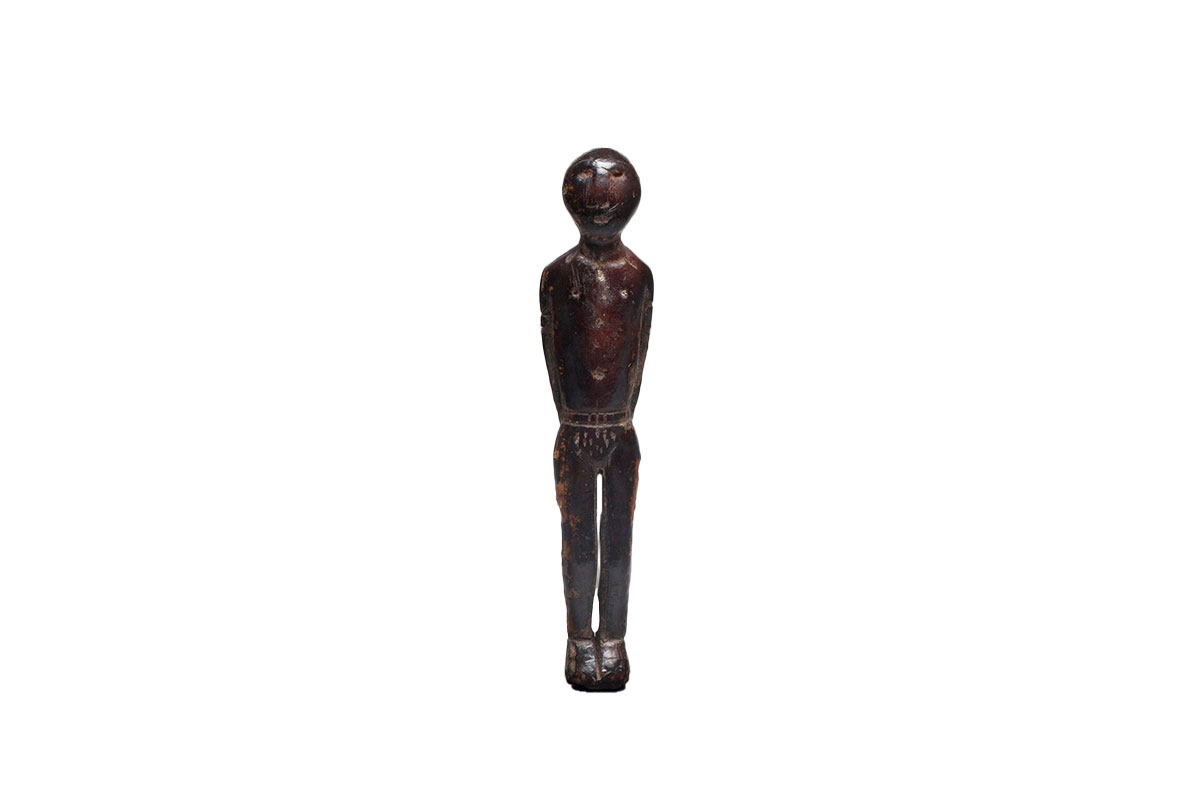Figure
Western Alaska
1200 - 1700 CE
marine mammal ivory
height: 3"
Inventory # CE4283
Please contact the gallery for more information.
PROVENANCE
Excavated north of Nome, near Teller, Alaska, in September 2010
PUBLISHED
Donald Ellis Gallery catalogue, Toronto, 2011, pg. 33
RELATED EXAMPLES
Allen Wardwell, Prehistoric Eskimo Ivories, Dalton: Studley Press, 1992, pls. 25 and 26
Despite changes in technology and culture throughout many centuries, the pre-contact Inuit inhabitants of the Bering Strait have continuously employed the human form as a central motif in their art. The irrepressible urge to create a tangible representation of themselves in their work has given birth to a diverse range of styles over the course of time, from the highly stylized dolls of the Okvik period to the more naturalistic figures of the Thule. Alongside utilitarian implements, the Thule people created beautifully sensitive renderings of the human form as stand-alone sculptures. Thule figures range in style from the fully formed naturalistic examples most prevalent on the West coast of the Alaskan mainland to the minimalist forms of St. Lawrence Island miniature figures, consisting of little more than a faceless head upon a simple torso. The present example exhibits a deep brown patina. Standing tall with hands held behind the back, the artist has carefully distilled the essential features of the human figure, rendering facial features and anatomic detail with minimal gestures that require the eyes and hands of an excelling carver.

